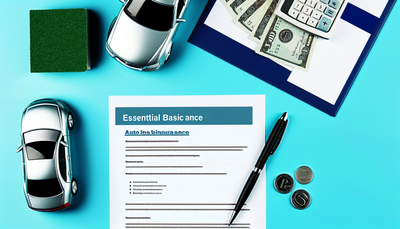How to Choose the Right Auto Insurance Coverage for Your Needs

How to Choose the Right Auto Insurance Coverage for Your Needs
Auto insurance isn’t just a legal requirement—it’s essential protection for your vehicle, your finances, and your peace of mind. But with so many options out there, choosing the right auto insurance coverage can feel overwhelming. Whether you’re a first-time buyer or reassessing your current policy, this guide will help you make informed decisions tailored to your specific needs.
Why Choosing the Right Coverage Matters
Not all car insurance policies are created equal. The right coverage ensures:
- Financial security in case of an accident
- Protection from liability claims
- Compliance with state laws
- Peace of mind while on the road
Choosing insufficient coverage could leave you vulnerable, while over-insuring might mean paying extra for benefits you don't need.
Understand the Types of Auto Insurance Coverage
Before you start comparing quotes, it’s crucial to understand the main types of coverage:
- Liability Insurance: Covers damages you cause to others in an accident. This is typically required by law.
- Collision Coverage: Pays for damage to your vehicle from a collision, regardless of fault.
- Comprehensive Coverage: Covers non-collision-related incidents like theft, fire, or weather damage.
- Uninsured/Underinsured Motorist Protection: Protects you if you're hit by someone without adequate insurance.
- Personal Injury Protection (PIP) or Medical Payments: Covers medical expenses for you and your passengers.
Assess Your Personal Needs
Consider these factors when choosing your level of coverage:
1. Vehicle Value
If your car is newer or still under financing, comprehensive and collision coverage may be worthwhile. For older cars, liability coverage might suffice.
2. Driving Habits
Do you commute daily? Drive long distances? More time on the road increases your risk, which might justify higher coverage.
3. Budget Constraints
Balance premium costs with deductibles. A higher deductible can lower your monthly payments, but make sure it's affordable in the event of a claim.
4. State Requirements
Make sure you meet or exceed your state's minimum insurance requirements to avoid fines or license suspension.
5. Additional Drivers
Adding teenage drivers or less-experienced individuals can impact your rates and may require adjustments to your policy.
Compare Policies and Providers
Don’t just settle for the first quote you get. Comparing multiple auto insurance providers can help you find the best balance between coverage and cost. Look at:
- Premium rates
- Deductibles
- Policy limits
- Customer reviews
- Claim processing speed
Take Advantage of Discounts
Ask about available discounts for:
- Safe driving records
- Bundling home and auto policies
- Anti-theft devices or safety features
- Low mileage usage
Review and Update Regularly
Your insurance needs can change. Review your policy annually or after major life changes such as buying a new car, moving, or adding a driver.
Final Thoughts
Choosing the right auto insurance coverage is a personal decision that requires assessing your unique situation. By understanding the types of coverage, evaluating your needs, and comparing options, you can ensure your car—and your finances—are fully protected.
Remember, the best policy isn’t the cheapest one—it’s the one that gives you the most confidence every time you hit the road.
Take your time, ask questions, and don’t hesitate to consult with an insurance agent to make the best choice for your car protection needs.







